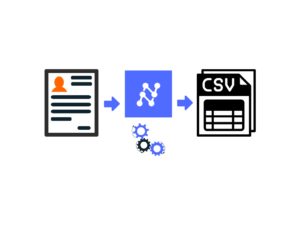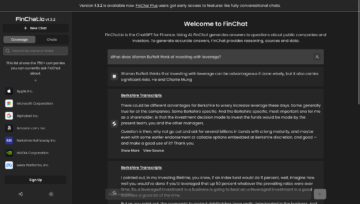Introduction
Documents are the lifeblood of business communication. They allow for the transfer of information, the tracking of decisions, the formalization of procedures, and the documentation of business transactions, among many other things. Documents come in a myriad of forms such as emails, memos, contracts, invoices, reports, and more. They can take the shape of text files, spreadsheets, presentations, and other digital formats. They not only hold business-critical data but also help shape the narrative of an organization’s journey, achievements, and future aspirations. In our digital age, documents have evolved from paper-based to electronic formats, making their creation, distribution, and storage easier, faster, and more efficient. Yet, despite this evolution, the management of documents can still pose significant challenges to businesses due to the volume, variety, and complexity of information they contain.

Why are Document Workflows essential?
Creating efficient document workflows can yield substantial benefits for businesses. Efficient workflows ensure that documents move smoothly from creation to completion, reducing bottlenecks, minimizing errors, and enhancing productivity. With well-structured workflows, the right information reaches the right people at the right time, ensuring timely decision-making and task completion.
The advantages of efficient document workflows are numerous:
- Improved Productivity: Automating repetitive tasks allows employees to focus on more critical, strategic tasks.
- Increased Accuracy: Automated processes reduce human error, ensuring the accuracy of documents.
- Enhanced Compliance: With automated tracking and reporting, businesses can more easily adhere to regulatory requirements.
- Streamlined Collaboration: With efficient workflows, team members can easily collaborate on documents, reducing redundancies and improving team synergy.
- Better Time Management: Efficient workflows minimize delays in approvals and reviews, speeding up project timelines.
- Cost Savings: Automation reduces labor costs and can help save on paper and storage costs in the case of digital documents.
- Greater Visibility: Automated workflows provide clear oversight of document statuses, helping to identify bottlenecks and optimize processes.
By harnessing the power of efficient document workflows, businesses can unlock their full potential, maximizing productivity, enhancing quality, and driving growth.
Examples of Document Workflow Automation Impacting Businesses
Scenario 1: Accounts Payable Automation in a Large Manufacturing Firm
In the traditional setup, our firm, let’s call it ‘Solid Manufacture Inc.’, had an elaborate manual process for handling accounts payable, especially when it came to invoice and Purchase Order (PO) matching.

This is how it used to work:
Traditional Approach:
Invoice Receipt: The Accounts Payable (AP) team received hard copies of vendor invoices by mail. In some instances, invoices were emailed and then printed out for further processing.
PO Verification: The AP clerk checked the PO number on the invoice, then manually searched for the corresponding PO in a filing cabinet or electronic system.
Invoice and PO Matching: The AP clerk compared the details on the invoice with the PO and any associated delivery receipts. This included checking vendor details, items purchased, quantity, price, and more. Any discrepancies were flagged for resolution, which could entail multiple email exchanges or phone calls with the vendor.
Data Entry: Once the details were verified, the AP clerk manually entered the invoice data into the accounting system. This step was prone to human error.
Approval and Payment: The invoice was forwarded to the relevant department head for approval. Upon approval, the invoice was returned to the AP team for payment processing.
The entire process was time-consuming, resource-intensive, and prone to errors. It also made auditing a daunting task, as tracking document flow was challenging.
The transformation began when Solid Manufacture Inc. decided to automate its accounts payable process. The firm integrated Optical Character Recognition (OCR) and automated workflow technologies into its operations.
Automated Approach:
Digital Invoice Receipt: Invoices are now received digitally via a dedicated email address or vendor portal. This has eliminated the need for physical mail, saving time and reducing the chance of lost documents.
OCR-Based Data Capture: OCR technology is used to automatically extract critical invoice information, such as vendor details, PO number, invoice number, date, line item details, and total amount. This has dramatically reduced the time spent on data entry and eliminated human errors.

Automatic PO Verification and Matching: The system automatically retrieves the corresponding PO based on the PO number extracted from the invoice. It then matches the invoice details against the PO and any associated delivery receipts. Any discrepancies are automatically flagged and sent to an AP clerk for resolution, significantly speeding up the process.
Automated Approval Workflow: Based on predefined rules, the system automatically routes the validated invoices to the appropriate approvers. Approvers receive notifications and can approve invoices directly from their email or via the AP system. This has expedited the approval process and provided a clear audit trail.
Automatic Payment Processing: Once approved, the invoice data is seamlessly pushed to the payment processing system, eliminating manual data entry.
This automated approach has transformed Solid Manufacture Inc.’s AP process. Tasks that previously took days or even weeks can now be completed in a fraction of the time. The firm has achieved significant cost savings, improved accuracy, and enhanced vendor relationships. Moreover, the clear audit trail provided by the automated workflow has made compliance and auditing a breeze.
While the transition required an initial investment in technology and process redesign, the return on investment has been tremendous. The AP team can now focus on strategic tasks rather than being bogged down with mundane, manual work.
Automation and OCR technology have not just streamlined Solid Manufacture Inc.’s document workflow but have also facilitated a significant leap towards digital transformation, setting the stage for the incorporation of even more advanced technologies such as Artificial Intelligence (AI) and Machine Learning (ML) in the future.
This example underscores the transformative potential of workflow automation and OCR in optimizing document workflows. It serves as a reminder that, regardless of the industry or business size, digital transformation can drive operational efficiency and competitive advantage.
Scenario 2: Claims Processing Automation in a Large Insurance Company
In the traditional setting, our imaginary insurance company, let’s call it ‘Safe Haven Insurance Co.’, had a largely manual process for handling insurance claims. This presented a variety of challenges, including long processing times, high error rates, and poor customer satisfaction. Here’s a look at the traditional, manual process:
Traditional Approach:
Claim Initiation: Customers would call or send a written notice to initiate a claim. Sometimes, they had to fill out forms that were mailed to them, and then mail them back.
Document Collection: The Claims Handler would then collect all necessary documents such as medical reports, police reports, or receipts, depending on the type of insurance claim. These documents often arrived via mail or fax and were sometimes incomplete, leading to delays.
Data Entry: The Claims Handler manually entered the claim details into the claims management system. They would also scan any associated physical documents and manually attach them to the claim file. This process was time-consuming and prone to data entry errors.
Claims Investigation: The claim was then forwarded to a Claims Adjuster for investigation. This involved manually reviewing all the documents and verifying the details of the claim, a process that was often slow and cumbersome.
Claim Approval and Payment: Once the investigation was completed, the claim was either approved or denied. If approved, the payment details were manually entered into the payment system, another step susceptible to errors.
Given the complexities and inefficiencies of this manual process, Safe Haven Insurance Co. decided to overhaul their claims process by implementing workflow automation and OCR technology.
Automated Approach:
Digital Claim Initiation: Customers can now initiate a claim via a user-friendly online portal or mobile app, leading to faster initiation and better customer satisfaction.
Automated Document Collection: Customers can upload necessary documents directly through the online portal. This has not only eliminated the need for mail or fax but also reduced the incidence of incomplete submissions.
OCR-Based Data Extraction: OCR technology automatically extracts key information from the uploaded documents, significantly reducing manual data entry. For instance, a medical bill’s date, service description, and cost can be auto-extracted and matched with claim data.

Automated Claims Investigation: An automated rule-based system conducts a preliminary investigation of the claim. It checks for discrepancies and flags potential issues. If a claim passes this step without flags, it can be auto-adjudicated, speeding up the process dramatically. For flagged or complex claims, they are routed to a Claims Adjuster for manual review.
Automated Claim Approval and Payment: Once a claim is approved, either by auto-adjudication or manual review, the system automatically populates the payment details into the payment system, reducing manual work and potential errors.
The implementation of workflow automation and OCR technology has revolutionized Safe Haven’s claims processing. Claims that used to take weeks to process can now be handled in a matter of days or even hours. It has improved accuracy, reduced costs, and most importantly, increased customer satisfaction due to faster claim resolutions.
Moreover, the system provides real-time visibility into claim statuses, enabling better management and customer communication. It also offers a clear audit trail, facilitating regulatory compliance.
The shift to an automated document workflow has propelled Safe Haven Insurance Co. into the digital age, providing a robust foundation for future enhancements, including the incorporation of Artificial Intelligence (AI) and Machine Learning (ML) technologies to further enhance decision-making and efficiency.
This scenario illustrates how the integration of OCR and automated workflows can transform even the most complex and document-intensive processes, leading to significant improvements in efficiency, accuracy, and customer satisfaction. The benefits extend beyond operational improvements, setting the stage for business growth and competitive advantage in an increasingly digital world.
Best Document Workflow Automation Software in 2023
1. NanoNets
NanoNets is a powerful tool that uses Machine Learning to create custom workflow automation solutions. NanoNets leverages OCR capabilities to extract data from a wide array of document types, simplifying and automating the process of data input and manipulation.
Pros:
- Advanced OCR Capabilities: NanoNets uses machine learning algorithms to read and interpret unstructured document data, making it more accurate than traditional OCR tools.
- Custom Models: Users can create custom models that are tailored to their specific business needs, allowing for a high degree of flexibility.
- Integrations: NanoNets can easily integrate with existing systems via it’s ecosystem of ready to use integrations and API, enabling seamless workflow automation.
Cons:
- Learning Curve: The process of creating custom models may require some technical knowledge, which could pose a challenge for non-technical users.
- Pricing: While NanoNets offers powerful capabilities, the pricing can be relatively high compared to simpler tools, which may not make it the best fit for very small businesses with a tight budget.
2. DocuWare
DocuWare is a comprehensive Document Management System (DMS) that supports automated document workflows. It provides smart digital workflow and document control for substantial productivity gains.
Pros:
- Scalability: DocuWare is scalable, making it a good fit for businesses of all sizes.
- Integration: It offers robust integration capabilities with commonly used enterprise systems.
- Cloud-Based: The platform is cloud-based, ensuring accessibility from anywhere and reducing the need for on-premises infrastructure.
Cons:
- User Interface: Some users find the interface a bit outdated and not as intuitive compared to other modern systems.
- Customization Complexity: While it offers a lot of customization options, setting them up can sometimes be complex.
3. Nintex
Nintex is a well-known name in the field of workflow automation. The platform allows organizations to automate processes on and between leading enterprise content management systems.
Pros:
- Versatility: It supports a wide range of automation types, from simple to complex processes.
- Ease of Use: Nintex uses a drag-and-drop designer, which is intuitive and requires minimal technical knowledge.
- Reporting and Analytics: The platform offers built-in reporting and analytics tools to track the effectiveness of workflows.
Cons:
- Cost: Nintex can be expensive, especially for small to medium-sized businesses.
- Integration Limitations: While it integrates with many systems, there are some limitations and difficulties that users have reported.
4. ProcessMaker
ProcessMaker is an easy-to-use, open-source BPM and workflow software tool that allows businesses to design, automate, and deploy business processes.
Pros:
- Open-Source: As an open-source tool, it offers a high level of flexibility and customization.
- Mobile Friendly: ProcessMaker has a mobile app, allowing for workflow management on the go.
- Good User Community: Being open-source, it has a large user community that can be a source of support and resources.
Cons:
- Technical Knowledge Required: Customizing ProcessMaker can require considerable technical knowledge, which might be a barrier for some users.
- Less Intuitive UI: The user interface isn’t as intuitive as some of the other options on the market.
5. Kissflow
Kissflow is a cloud-based workflow automation tool that allows users to design and implement automated workflows, with an emphasis on usability and simplicity.
Pros:
- User-Friendly Interface: It features a drag-and-drop interface that is user-friendly and easy to use.
- Variety of Pre-built Applications: Kissflow offers a large number of pre-built applications, which can help get workflows up and running more quickly.
- Integration: It integrates with many popular platforms like G Suite, Slack, and QuickBooks.
Cons:
- Limited Customization: The focus on simplicity can limit the level of customization available for complex workflows.
- Customer Support: Some users have reported that customer support can be slow to respond to queries and issues.
These platforms offer diverse capabilities to automate document workflows, which can greatly enhance efficiency, accuracy, and productivity. When selecting the right tool, it is crucial to consider the specific needs and resources of your business.
How to set up your Automated Document OCR Workflow with Nanonets

- Choose a pretrained model based on your document type / create your own document extractor within minutes. You can also set up document classification capabilities here.

- Once you have created the model, navigate to the Workflow section in the left navigation pane.

- Go to the import tab and configure your document imports. You can set up one or multiple imports from software / db of your choice.

- Set up any postprocessing blocks to process data extracted from documents. To perform advanced operations not currently supported by Action Blocks, you can switch to Python Postprocessing to do your required data processing via Python code by writing code in a python environment within the platform.

- Set up Validation and Approval Rules. You can set up automated rules based on conditions using the document text and extracted structured data, and even incorporate manual approval processes where files are sent to and need approval from certain people.

- Set up Exports
Finally, you can set up exports for the extracted data to flow to any software / ERP / database of your choice using our ready to use integrations. You can also choose to export not just the data, but the document itself, either in original or modified form. This completes your workflow.
Nanonets for Automated Document Workflows
NanoNets is a pioneering platform leveraging advanced machine learning and optical character recognition (OCR) technology to revolutionize document workflows. Its capabilities extend beyond just automating manual processes, enabling businesses to drive efficiency, improve accuracy, and significantly reduce operational costs.
One of the distinguishing features of NanoNets is its ability to create custom models. The platform allows users to build and train models specific to their business needs. This capability offers immense flexibility, as the same tool can be tailored to handle diverse workflows across different departments or industries. Whether it’s processing invoices in an accounts payable department or managing claims in an insurance firm, NanoNets’ custom models can adapt and deliver.
The core of NanoNets’ efficacy lies in its advanced OCR capabilities. Traditional OCR tools can struggle with unstructured data and often require specific formatting or data arrangement. NanoNets, however, uses machine learning algorithms that excel in reading and interpreting unstructured data, resulting in superior accuracy and performance. This capability allows it to extract key data from a wide array of document types, converting unstructured data into actionable insights.
NanoNets’ ecosystem of integrations makes connecting with existing systems a breeze. Be it ERP systems, CRM tools, or databases, NanoNets can connect seamlessly, ensuring your document workflows are well integrated with your broader IT ecosystem. This not only simplifies the automation process but also enables real-time data flow, fostering more informed business decisions.
The platform also offers robust security and privacy features, understanding the critical nature of the data it handles. It adheres to top industry standards for data security, ensuring your sensitive business information remains protected.
In summary, NanoNets stands as a powerful ally in a business’s journey towards digital transformation. It takes automated document workflows a notch higher, enabling businesses to harness the power of AI in everyday processes. The potential applications and benefits are vast, making NanoNets a worthy consideration for businesses seeking to elevate efficiency and drive operational excellence.
Conclusion
As we step back and look at the broader picture, the profound impact of document workflows on business operations becomes abundantly clear. They serve as vital veins of communication, carrying essential data and information that drive business decisions and transactions. This underlines the paramount importance of efficiency in document workflows, which can offer a host of benefits such as improved productivity, increased accuracy, better compliance, streamlined collaboration, time management, cost savings, and greater visibility.
The need for efficiency becomes even more compelling as we navigate the real-life scenarios of Solid Manufacture Inc., a large manufacturing firm, and Safe Haven Insurance Co., a sizeable insurance company. The traditional, manual methods of handling accounts payable and claims processing, respectively, were riddled with challenges – they were slow, resource-intensive, and prone to errors. By integrating workflow automation and Optical Character Recognition (OCR), these organizations transformed their processes. They significantly reduced processing times, improved accuracy, enhanced customer satisfaction, and provided clearer audit trails for compliance.
And the technology driving such transformations isn’t confined to a few tech-savvy businesses; it is accessible to all. Platforms such as NanoNets, DocuWare, Nintex, ProcessMaker, and Kissflow make automation achievable for businesses of all sizes and across industries. Each offers its unique strengths, from advanced OCR capabilities and custom models in NanoNets, scalability in DocuWare, versatility in Nintex, open-source flexibility in ProcessMaker, to user-friendliness in Kissflow.
The choice of software, however, should hinge on the specific needs of your business. It’s not just about picking the most feature-rich platform; it’s about finding the solution that fits best within your operational framework and complements your strategic objectives. It’s about considering factors such as the complexity of your workflows, the volume of documents you handle, the size and technical expertise of your team, and the budget you can allocate towards digital transformation.
As businesses strive to navigate the digital age, the integration of OCR and workflow automation can serve as a powerful stepping stone. It’s not just about replacing manual with automated processes. It’s about reimagining workflows to be more streamlined, intelligent, and proactive. It’s about freeing up human resources from mundane tasks and enabling them to focus on what truly matters – creative, strategic, and customer-centric tasks. And above all, it’s about fostering a culture of continuous improvement and innovation, setting the stage for the integration of even more advanced technologies such as Artificial Intelligence (AI) and Machine Learning (ML).
In conclusion, the digital transformation of document workflows is no longer an option; it’s a necessity for businesses to stay competitive and agile. It’s an investment in your business’s future, promising not just immediate operational gains but also long-term strategic benefits. Embrace the power of automation today and steer your business towards a more efficient, productive, and successful tomorrow.
- SEO Powered Content & PR Distribution. Get Amplified Today.
- EVM Finance. Unified Interface for Decentralized Finance. Access Here.
- Quantum Media Group. IR/PR Amplified. Access Here.
- PlatoAiStream. Web3 Data Intelligence. Knowledge Amplified. Access Here.
- Source: https://nanonets.com/blog/document-workflow-automation-software-in-2023/
- :has
- :is
- :not
- :where
- $UP
- 1
- 13
- a
- ability
- About
- above
- accessibility
- accessible
- Accounting
- Accounts
- accounts payable
- accounts payable automation
- accuracy
- accurate
- achieved
- achievements
- across
- Action
- adapt
- address
- adhere
- advanced
- ADvantage
- advantages
- against
- age
- agile
- AI
- algorithms
- All
- allow
- Allowing
- allows
- Ally
- also
- among
- amount
- an
- analytics
- and
- Another
- any
- anywhere
- api
- app
- applications
- approach
- appropriate
- approval
- approvals
- approve
- approved
- ARE
- arrangement
- Array
- artificial
- artificial intelligence
- Artificial intelligence (AI)
- AS
- associated
- At
- attach
- audit
- auditing
- auto
- automate
- Automated
- automatically
- automating
- Automation
- available
- back
- barrier
- based
- BE
- becomes
- been
- began
- being
- benefits
- BEST
- Better
- between
- Beyond
- Bill
- Bit
- Blocks
- bogged
- bottlenecks
- breeze
- broader
- budget
- build
- built-in
- business
- business operations
- business processes
- businesses
- but
- by
- call
- Calls
- came
- CAN
- capabilities
- carrying
- case
- certain
- challenge
- challenges
- challenging
- Chance
- character
- character recognition
- checked
- checking
- Checks
- choice
- Choose
- claim
- claims
- Claims Management
- classification
- clear
- clearer
- CO
- code
- collaborate
- collaboration
- collect
- COM
- come
- commonly
- Communication
- community
- company
- compared
- compelling
- competitive
- Completed
- Completes
- completion
- complex
- complexities
- complexity
- compliance
- comprehensive
- conclusion
- conditions
- conducts
- Connect
- Connecting
- Consider
- considerable
- consideration
- considering
- content
- content management
- continuous
- contracts
- control
- converting
- Core
- Corresponding
- Cost
- cost savings
- Costs
- could
- create
- created
- Creating
- creation
- Creative
- critical
- CRM
- crucial
- Culture
- Currently
- curve
- custom
- customer
- Customer satisfaction
- Customer Support
- Customers
- customization
- data
- data entry
- data processing
- data security
- Database
- databases
- Date
- Days
- decided
- Decision Making
- decisions
- dedicated
- Degree
- delays
- deliver
- delivery
- Department
- departments
- Depending
- deploy
- description
- Design
- Designer
- Despite
- details
- different
- difficulties
- digital
- digital age
- digital documents
- Digital Transformation
- digital world
- digitally
- directly
- distribution
- diverse
- do
- document
- document management
- documentation
- documents
- down
- dramatically
- drive
- driving
- due
- each
- easier
- easily
- easy
- easy-to-use
- ecosystem
- effectiveness
- efficacy
- efficiency
- efficient
- either
- Elaborate
- Electronic
- ELEVATE
- eliminated
- eliminating
- emails
- embedded
- embrace
- emphasis
- employees
- enables
- enabling
- enhance
- enhanced
- enhancements
- enhancing
- ensure
- ensuring
- entered
- Enterprise
- Entire
- entry
- Environment
- ERP
- error
- Errors
- especially
- essential
- Ether (ETH)
- Even
- everyday
- evolution
- evolved
- example
- Excel
- Excellence
- Exchanges
- existing
- expensive
- expertise
- export
- exports
- extend
- extract
- Extracts
- facilitated
- facilitating
- factors
- faster
- fax
- Features
- few
- field
- File
- Files
- Filing
- fill
- Find
- finding
- Firm
- fit
- flagged
- flags
- Flexibility
- flow
- Focus
- For
- form
- forms
- fostering
- Foundation
- fraction
- Framework
- friendly
- from
- full
- further
- future
- Gains
- get
- gif
- Go
- good
- greater
- greatly
- Growth
- had
- handle
- handled
- Handles
- Handling
- Hard
- harness
- Harnessing
- Have
- head
- help
- helping
- here
- High
- higher
- Hinge
- hold
- host
- HOURS
- How
- How To
- However
- HTTPS
- human
- Human Resources
- identify
- if
- illustrates
- imaginary
- immediate
- immense
- Impact
- impacting
- implement
- implementation
- implementing
- import
- importance
- imports
- improve
- improved
- improvement
- improvements
- improving
- in
- Inc.
- incidence
- included
- Including
- incorporate
- increased
- increasingly
- industries
- industry
- industry standards
- information
- informed
- Infrastructure
- initial
- initiate
- Innovation
- input
- insights
- instance
- insurance
- integrate
- integrated
- Integrates
- Integrating
- integration
- integrations
- Intelligence
- Intelligent
- Interface
- into
- Introduction
- intuitive
- investigation
- investment
- involved
- isn
- issues
- IT
- items
- ITS
- itself
- journey
- just
- Key
- knowledge
- labor
- large
- largely
- leading
- Leap
- learning
- left
- Level
- leverages
- leveraging
- lies
- like
- LIMIT
- limitations
- Line
- Long
- long-term
- longer
- Look
- lost
- Lot
- machine
- machine learning
- made
- make
- MAKES
- Making
- management
- management system
- managing
- Manipulation
- manual
- manual work
- manually
- manufacturing
- many
- Market
- matched
- matching
- Matter
- Matters
- maximizing
- May..
- medical
- Members
- methods
- might
- minimal
- minimize
- minimizing
- minutes
- ML
- Mobile
- Mobile app
- model
- models
- Modern
- modified
- more
- more efficient
- Moreover
- most
- move
- multiple
- name
- NARRATIVE
- Nature
- Navigate
- Navigation
- necessary
- Need
- needs
- no
- non-technical
- Notice..
- notifications
- now
- number
- numerous
- objectives
- OCR
- of
- offer
- Offers
- often
- on
- once
- ONE
- online
- only
- open source
- operational
- Operations
- optical
- optical character recognition
- Optimize
- optimizing
- Option
- Options
- or
- order
- organization
- organizations
- original
- Other
- our
- out
- Overhaul
- Oversight
- own
- pane
- Paper
- paper-based
- Paramount
- passes
- payment
- payment processing
- payment system
- People
- perform
- performance
- phone
- phone calls
- physical
- picture
- Pioneering
- platform
- Platforms
- plato
- Plato Data Intelligence
- PlatoData
- PO
- Police
- poor
- Popular
- Portal
- potential
- power
- powerful
- Presentations
- presented
- previously
- price
- pricing
- privacy
- Proactive
- procedures
- process
- processes
- processing
- productive
- productivity
- profound
- project
- promising
- protected
- provide
- provided
- provides
- providing
- purchase
- purchase order
- purchased
- pushed
- Python
- quality
- quantity
- queries
- Quickbooks
- quickly
- range
- Rates
- rather
- Reaches
- Read
- Reading
- ready
- real-time
- real-time data
- receipts
- receive
- received
- recognition
- redesign
- reduce
- Reduced
- reduces
- reducing
- Regardless
- regulatory
- Regulatory Compliance
- Relationships
- relatively
- relevant
- remains
- repetitive
- Reported
- Reporting
- Reports
- require
- required
- Requirements
- requires
- Resolution
- resource-intensive
- Resources
- Respond
- resulting
- return
- review
- reviewing
- Reviews
- revolutionize
- revolutionized
- right
- robust
- routes
- rules
- running
- s
- safe
- Safe Haven
- same
- satisfaction
- Save
- saving
- Savings
- Scalability
- scalable
- scan
- scenario
- scenarios
- seamless
- seamlessly
- Section
- security
- seeking
- selecting
- send
- sensitive
- sent
- serve
- serves
- service
- set
- setting
- setup
- Shape
- shift
- should
- significant
- significantly
- Simple
- simplicity
- simplifying
- Size
- sizes
- slack
- slow
- small
- small businesses
- smart
- smoothly
- Software
- solid
- solution
- Solutions
- some
- Source
- specific
- spent
- Stage
- standards
- stands
- stay
- Step
- stepping
- Still
- STONE
- storage
- Strategic
- streamlined
- strengths
- strive
- structured
- Struggle
- Submissions
- substantial
- successful
- such
- suite
- SUMMARY
- superior
- support
- Supported
- Supports
- susceptible
- Switch
- synergy
- system
- Systems
- tailored
- Take
- takes
- Task
- tasks
- team
- Team members
- Technical
- Technologies
- Technology
- than
- that
- The
- The Future
- their
- Them
- then
- There.
- These
- they
- things
- this
- Through
- time
- time-consuming
- timelines
- times
- to
- today
- tomorrow
- took
- tool
- tools
- top
- Total
- towards
- track
- Tracking
- traditional
- Train
- Transactions
- transfer
- Transform
- Transformation
- transformations
- transformative
- transformed
- transition
- tremendous
- truly
- type
- types
- ui
- understanding
- unique
- unlock
- uploaded
- upon
- usability
- use
- used
- User
- User Interface
- user-friendly
- users
- uses
- using
- validated
- validation
- variety
- Vast
- vendor
- Verification
- verified
- verifying
- very
- via
- VIMEO
- visibility
- vital
- volume
- was
- Way..
- we
- Weeks
- WELL
- well-known
- were
- What
- when
- whether
- which
- while
- wide
- Wide range
- with
- within
- without
- Work
- workflow
- workflow automation
- workflows
- world
- would
- writing
- written
- yet
- Yield
- you
- Your
- zephyrnet










